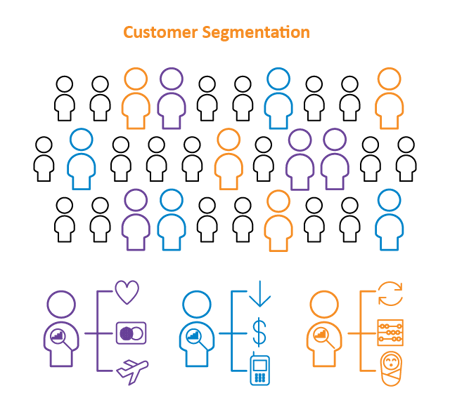
How to ensure a great customer experience
'How was your experience today?' A simple question, but still one of the most important to ask. Companies today are advancing their methods for determining customer satisfaction - many airports, public service buildings and retail outlets are using customer satisfaction measurement terminals, which prompt their customers to select from a range of smiley face buttons to indicate how satisfied they were with a service.
As clever as these indicators are for measuring experience after the event, the challenge of actually ensuring customer satisfaction leaves many companies stumped. Every organisation is different, as is every customer! It’s important to take obvious steps (e.g. hiring friendly and helpful people, being upfront and honest, streamlining operations to reduce customer wait times and making sure to rectify any mistakes so customers feel heard and appreciated), but there isn’t a one-size-fits-all approach to overall customer satisfaction.
With recent advancements in analytics, however, there are ways to get a better sense of the makeup of your customer base and tailor your efforts accordingly. Here are Datamine’s two overarching suggestions for how analytics can help you cultivate and measure a great customer experience.
 Understand your customer
Understand your customer
This seems like a no-brainer, but many companies haven’t actually done the necessary analysis to truly understand the different facets of their customer base. In order to be able to deliver someone the best possible customer experience. You first have to know more about them - what is their age, gender, location and other demographic information? What is their purchase history with your business? And what ultimately drives their buying decisions?
These questions can be answered through customer segmentation analysis. By taking a dive into your data and isolating/analysing individual customers (also known as ‘creating a single customer view’), you can begin breaking up your customer base into smaller groups that are similar to one another. These groups can be decided based on the customer qualities that are most important to your business - for example, similarities in transactions, age, location, gender, buying patterns and more.

There are a number of different kinds of segmentations (strategic, marketing, operational etc.) you can employ depending on the nature of your business and customers. Some segmentations are macro, others are micro - the type of analysis you need will determine the amount of investment, capability, back-end data, alignment of tactical aspects and number of tools you’ll have to use.
Once you have individualised profiles for a number of different customer categories, you’re ready for the next step.
 Use that data to deliver personalised experiences
Use that data to deliver personalised experiences
When you’ve created single customer views and segment your data, you can begin to deploy personalised marketing campaigns that are specifically targeted towards various sections of your customer base. Research has shown that personalised buying experiences greatly improve customer experience. For example, a 2016 survey from Accenture demonstrated that customers are more likely to buy from a store that:
- Recognises them by name (56%)- Gives them recommendations based on their last purchase (58%)
- Knows their purchase history (65%)
 So how do you make your customer communications personalised?
So how do you make your customer communications personalised?
The first step is determining what message you want you send to each of the segments you’ve identified, as they will all need to be approached differently. In order to come up with the right message for each segment, you need to look at all the touchpoints in your business’ relationship with the customer (website, call centre, email, bricks & mortar outlet, social media etc.) and how they fit into that specific customer journey. What are you trying to do for a particular customer? What do they want from their relationship with you?
By creating qualitative customer ‘profiles’ for each of the segments, the marketing team can determine exactly what content is appropriate to present to each customer group. The next step is to write queries within your marketing automation platform defining which message will be sent to which segment, when, where and how.
For example, let’s say you’re a retailer and you identify a segment of customers that haven’t purchased anything in five weeks (which is abnormal for your unique business). You might send an email offer to these customers, tailored specifically to the individual based on their transaction history (such as a ‘buy one get one free’ promotion on the last item they purchased).
Naturally, these segments will need to be revisited and updated as the business grows, and it’s also important to analyse whether or not your personalised campaigns are working. Are your customers more satisfied? Are the personalised campaigns more successful than generic ones? What needs to change?
 Where should you start?
Where should you start?
We recognise that these two steps are very broad and somewhat vague - that’s because customer experience is one of the most comprehensive and complicated areas of analytics! There are a myriad of different solutions that fall under the umbrella of ‘customer experience’, one of which is actually Marketing Personalisation as mentioned (and linked) above.
For more in-depth information about customer segmentation, check out the Datamine Guide to Customer Segmentation below. If you have a specific challenge regarding customer experience that this article didn’t address, feel free to submit a consultation request to Datamine - we’d be happy to take a look at your situation and recommend a solution.
 Download The Datamine Guide to Customer Segmentation
Download The Datamine Guide to Customer Segmentation
In this guide, we examine various approaches to segmentation, reasons for choosing to segment and the segmentation process in practice. We’ll also discuss managing segmentation in-house and whether support from Datamine could improve your outcomes.














































